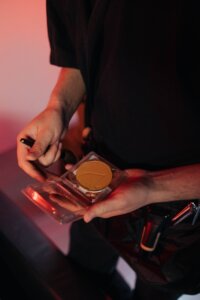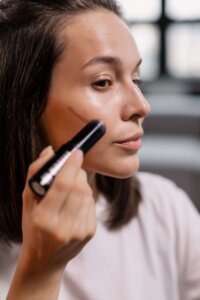Enhancing Your Features

Contouring has become a popular technique in the world of makeup, allowing us to sculpt and enhance our facial features. However, what works for one face shape may not necessarily work for another. Understanding your face shape is the key to mastering the art of contouring. In this blog post, we will delve into various face shapes and provide contouring tips and techniques tailored to each shape, enabling you to enhance your unique features and achieve a flawless, well-balanced look.
Identifying Your Face Shape
Before diving into contouring techniques, it’s important to determine your face shape. The four main face shapes are round, oval, square, and heart-shaped. Stand in front of a mirror and observe the overall shape of your face, taking note of the width and length of your forehead, cheekbones, and jawline. Understanding your face shape will help you create a personalized contouring strategy.
Contouring for Different Face Shapes
- Round Face: For round faces, the goal is to create the illusion of more angular features. To achieve this, apply a cool-toned contour shade along the hollows of your cheeks, starting from your ears towards the center of your cheeks. Blend the contour shade well to create a shadow effect and visually slim down the face. Apply a highlighter to the high points of your face, such as the cheekbones and brow bone, to add dimension and lift.
- Oval Face: Those blessed with an oval face shape have balanced proportions and can focus on enhancing their natural features. To add definition, apply a subtle contour shade along the temples, underneath the cheekbones, and along the jawline. Blend well for a seamless transition. Highlight the center of your forehead, the bridge of your nose, and the cupid’s bow to accentuate the natural contours of your face.
- Square Face: To soften the angles of a square face, focus on creating a more rounded appearance. Apply a contour shade along the hairline, temples, and jawline to minimize the strong angles. Blend the contour shade to create a natural-looking shadow effect. Apply a highlighter to the center of your forehead, the highest point of your cheekbones, and the tip of your chin to bring balance and add luminosity.
- Heart-Shaped Face: Heart-shaped faces typically have a wider forehead and narrower chin. The aim is to balance these proportions. Apply a contour shade underneath the cheekbones and along the temples to minimize the width of the forehead. Softly blend the contour shade for a natural effect. Apply a highlighter to the center of your forehead, the bridge of your nose, and the center of your chin to bring focus to the center of the face.
Tips for All Face Shapes
- Blend, blend, blend: Blending is the key to achieving a seamless and natural contour. Use a damp makeup sponge or a fluffy brush to blend the contour shade and highlighter for a flawless finish.
- Less is more: Start with a light hand when applying contour products. It’s easier to build up the intensity gradually than to remove excess product.
- Lighting matters: Consider the lighting conditions you’ll be in. What looks natural in daylight may appear heavy in artificial lighting. Adjust your contouring accordingly.

Conclusion
Contouring is a powerful technique that allows us to enhance our natural features and create balance in our makeup looks. By understanding your face shape and tailoring your contouring techniques accordingly, you can achieve a sculpted, harmonious appearance. Experiment with different products, practice blending, and most importantly, embrace and enhance your unique features. With these contouring tips, you’ll be well on your way to mastering the art of contouring and showcasing your beauty with confidence.

